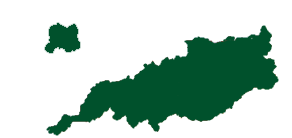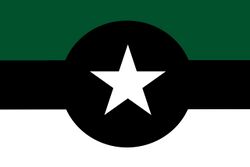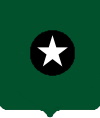Swinas: Difference between revisions
TentuberrAlt (talk | contribs) No edit summary |
TentuberrAlt (talk | contribs) No edit summary |
||
| Line 32: | Line 32: | ||
=== Amelia Norris === | === Amelia Norris === | ||
During the elections of 2021, Amelia Norris, a Unitary Politician ran for president. | During the elections of 2021, Amelia Norris, a Unitary Politician, ran for president of the formerly Federal Republic of Swinas. She campaigned on a platform of unity and modernization, emphasizing her commitment to improving the lives of all citizens and fostering a sense of national pride. Her campaign was fierce and competitive, as she faced several strong candidates from different political parties. Despite this, Amelia Norris emerged victorious, winning a majority of the votes in the election. With her victory, she became the 3rd woman to become president of Swinas. Her win was seen as a significant milestone in the country's political history, as it demonstrated the increasing participation and influence of women in the political sphere. Her presidency was marked by a number of significant reforms and achievements in areas such as education, healthcare, and infrastructure development, as well as uniting all the Swish provinces into one singular state. | ||
a fierce | |||
===Swish Socialist Party=== | ===Swish Socialist Party=== | ||
Since 2016, | Since 2016, there has been a significant increase in socialists in the government in Swinas. This trend is reflected in the growing popularity of socialist policies and ideas among the population, as well as the increased representation of socialists in local and national elections. In 2019, a socialist candidate even ran for president, though they were greatly outnumbered in support by other candidates from other parties. Despite this, the socialist candidate still managed to secure a significant number of votes, demonstrating the growing support for socialist ideas in the country. This trend has continued to evolve and the socialist party has become more influential in the government, and it is expected that in the future, the socialist party will continue to gain more support. | ||
== Economy == | == Economy == | ||
Revision as of 14:05, 15 January 2023
Unitary Republic of Swinas | |
|---|---|
 | |
| Capital | Goatford |
| National Language | German, Common |
| Ethnic groups |
|
| Government | Unitary Republic |
• President | Amelia Norris |
| Population | |
• 2021 census | 42,299,153 |
| GDP (nominal) | estimate |
• Total | 448,984,350,000 |
| Currency | Swish Ram, Swish Buckling |
The Unitary Republic of Swinas, commonly referred to as simply Swinas, is a country known for its diverse landscape, which ranges from the temperate climate and diverse landscape of North Swinas, to the largely desert landscape of South Swinas. The country's capital and largest city is Goatford, located in North Swinas. Swinas also has a growing interest in space exploration and a unique cuisine, particularly known for it's bizarre pizza toppings. The country's history and culture is shaped by the contrast between North and South regions and by the legacy of the indigenous people of South Swinas. Swinas offers an exciting blend of natural beauty, delicious food, and technological advancements that make it a unique and interesting destination for tourists and researchers alike.
History
Pre-Riamese Swinas
Before the arrival of the Riamese colonizers, the deserts of South Swinas were controlled by the Kawhaibia Dynasty, an indigenous tribe with a rich history and culture. The Kawhaibia people had developed unique methods of survival and adaptation to the harsh desert environment, and had built a prosperous civilization. The last emperor of the Kawhaibia Dynasty was Emperor Annikki, who, according to local accounts, politely handed the Riamese the crown and walked away. This act of peaceful surrender allowed for a relatively smooth transition of power and allowed the Kawhaibia people to maintain a significant degree of autonomy and cultural preservation under the rule of the Riamese colonizers. Today, the legacy of the Kawhaibia Dynasty continues to play an important role in the cultural identity of South Swinas and its people.
Independence
The Unitary Republic of Swinas, wasn't always a unitary republic. It was a colony of Riamo, until 1915 when Riamo began releasing many of its colonies. Upon receiving independence, the country had a referendum on what political system they should use. It was decided that the country would be a Federal Republic. This system was chosen because it would ensure that the different regions of the country would have some degree of autonomy and representation in the government. However, the country's political system was not set in stone and it was possible for the country to change its system at any time if the citizens deemed it necessary. In fact, the country eventually decided to change the system and became a unitary republic, as it is today.
Politics
Amelia Norris
During the elections of 2021, Amelia Norris, a Unitary Politician, ran for president of the formerly Federal Republic of Swinas. She campaigned on a platform of unity and modernization, emphasizing her commitment to improving the lives of all citizens and fostering a sense of national pride. Her campaign was fierce and competitive, as she faced several strong candidates from different political parties. Despite this, Amelia Norris emerged victorious, winning a majority of the votes in the election. With her victory, she became the 3rd woman to become president of Swinas. Her win was seen as a significant milestone in the country's political history, as it demonstrated the increasing participation and influence of women in the political sphere. Her presidency was marked by a number of significant reforms and achievements in areas such as education, healthcare, and infrastructure development, as well as uniting all the Swish provinces into one singular state.
Swish Socialist Party
Since 2016, there has been a significant increase in socialists in the government in Swinas. This trend is reflected in the growing popularity of socialist policies and ideas among the population, as well as the increased representation of socialists in local and national elections. In 2019, a socialist candidate even ran for president, though they were greatly outnumbered in support by other candidates from other parties. Despite this, the socialist candidate still managed to secure a significant number of votes, demonstrating the growing support for socialist ideas in the country. This trend has continued to evolve and the socialist party has become more influential in the government, and it is expected that in the future, the socialist party will continue to gain more support.
Economy
Swish Ram and Buckling
For a brief period of time after independence in 1915, Swinas kept the Riamese Currency. Though with help from the Riamese created the Swish Ram, named after Swinas' old goat religion. After establishing its own currency, Swinas also establishing the Swish Buckling, for the paying of non-dollar increments.
Geography
North Swinas
North Swinas is a region known for its temperate climate and diverse landscape. It serves as a major agricultural hub for the country, producing a variety of crops and livestock. The region is also home to Goatford, the capital and largest city of Swinas, as well as many smaller towns and villages that offer a unique glimpse into the culture and way of life of the residents. North Swinas plays a crucial role in the economic and cultural development of the country and is an important destination for both tourists and residents alike.
South Swinas
South Swinas is a region known for its largely desert landscape. The region was previously home to a large tribe, which represented the indigenous population of Swinas until it was colonized. The arid conditions of the region have shaped the culture and way of life of its inhabitants, who have developed unique methods of survival and adaptation. Despite the harsh environment, South Swinas has a rich history and culture, with many ancient ruins and artifacts that attest to the resilience of the indigenous people. Today, South Swinas remains an important part of the cultural identity of Swinas, and it continues to be a significant destination for those interested in the history and culture of the region.

